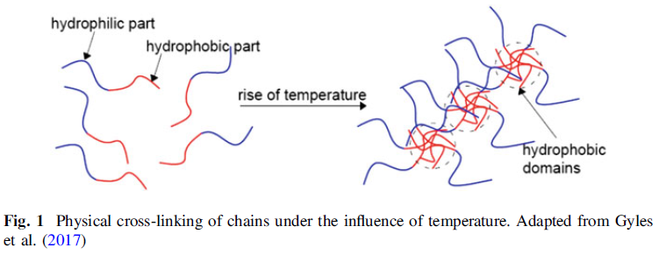Polymer physical gels have been used in numerous practical applications within food processing, chemical, cosmetics, pharmaceutical and agricultural industries. They may be obtained on the bases of synthetic and natural polymers. Natural polymers are easily biodegradable, hence their more extensive usage within the areas where synthetic polymers have been applied so far. The following chapter discusses basic properties and applications of physical gels obtained on the basis of cellulose derivatives. Additionally, it presents the application of rheology to examine the substances of this sort. The most widely known water-soluble cellulose derivatives include methylcellulose (MC), hydroxypropyl methylcellulose (HPMC), ethyl cellulose (EC), hydroxyethyl cellulose (HEC), and sodium carboxymethylcellulose (NaCMC). Despite the fact that the aforementioned polymers have been known for years, the research on their properties and the potential for new applications and usages are still being conducted.
Summary
The following paper presents the survey on cellulose derivatives which are capable of formulating the physical gels in aqueous solutions. The preparations based on the cellulose are biocompatible and biodegradable materials and hence they are widely used in chemical, food-processing, cosmetics and pharmaceutical industries. A noticeable part of cellulose derivatives are characterized by their capability to become gels when their solutions are heated. Solutions of individual cellulose derivatives differ in gelation temperatures. Its values may be modified by adding simple salts, surfactants, glycerin, etc. In ambient temperature, cellulose derivative-based physical gels may be obtained by changing pH, solvent composition or by using various additives. In the majority of cases, the formulated physical cross-linking results from intra- and interchain hydrogen bonds.

